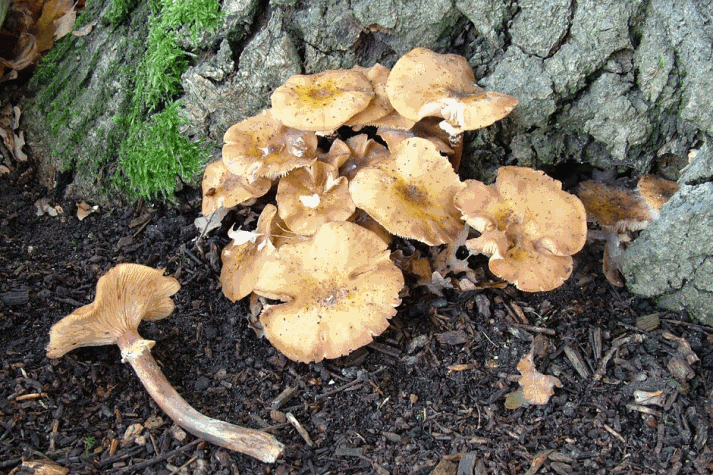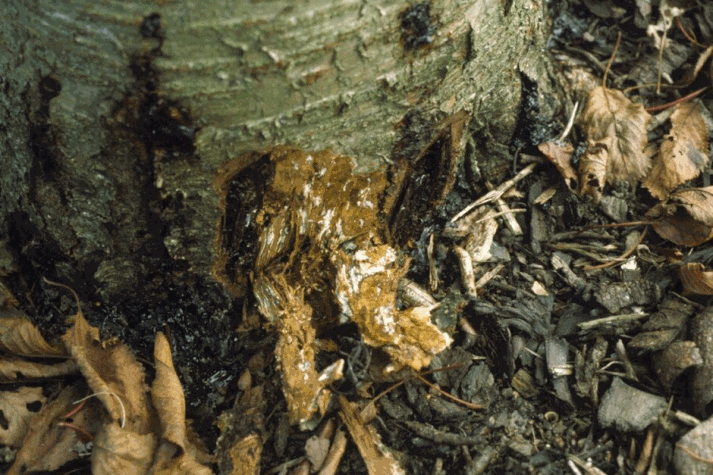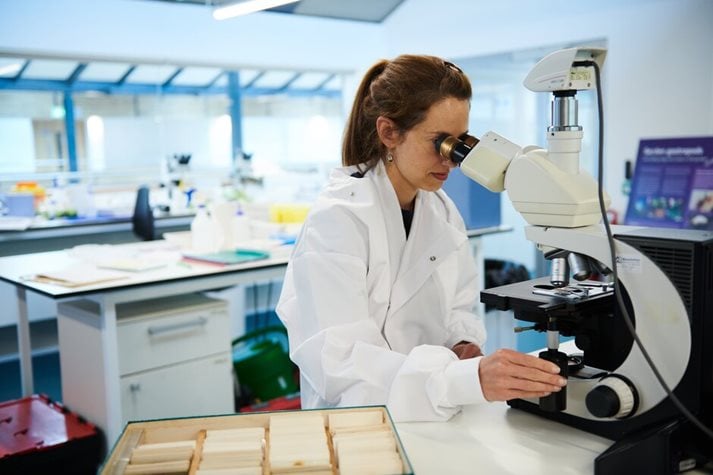RHS Science releases the top 10 most common diseases blighting UK gardens in 2022
 The Plant Health team at RHS Science has released its annual disease ranking, revealing the most prevalent problems for gardeners in 2022. The top 10 list shows a rise in diseases of fruit trees, with 9 out of the top 11 having the potential to impact fruit crop, cause leaf defoliation and even kill the plant.
The Plant Health team at RHS Science has released its annual disease ranking, revealing the most prevalent problems for gardeners in 2022. The top 10 list shows a rise in diseases of fruit trees, with 9 out of the top 11 having the potential to impact fruit crop, cause leaf defoliation and even kill the plant.
These diseases are largely linked to the extreme weather conditions we are increasingly seeing with climate change, including periods of drought, high temperatures and heavy rainfall. These extremes cause plants to become stressed, making them more susceptible to disease.
An uptick in the planting of fruit trees in gardens in recent years, including heritage varieties that could be more prone to disease, is also thought to be a factor.
Hit parade of garden nasties
|
|
Top diseases 2022
|
Top diseases 2021
|
Top diseases 2020
|
|
1
|
Honey fungus
|
Honey fungus
|
Honey fungus
|
|
2
|
Phytophthora root rots
|
Pear rust
|
Pear rust
|
|
3
|
Powdery mildew of Prunus
|
Bacterial leaf spot and canker of Prunus
|
Bacterial leaf spot and canker of Prunus
|
|
4
|
Rose black spot
|
Tomato/potato late blight
|
Rose black spot
|
|
5
|
Peach leaf curl
|
Rose black spot
|
Bracket fungi
|
|
6
|
Brown rot of fruit
|
Bracket fungi
|
Powdery mildew of Prunus
|
|
7
|
Silver leaf
|
Powdery mildew of Prunus
|
Blossom wilt of fruit trees
|
|
8
|
Apple and pear scab
|
Brown rot of fruit
|
Phytophthora root rots
|
|
9=
|
Pear rust
|
Phytophthora root rots
|
Rose powdery mildew
|
|
9=
|
Apple and pear canker
|
Box blight
|
Brown rot of fruit
|
| 9= |
Bacterial leaf spot and canker of Prunus |
|
|
The Plant Health team received a high number of enquiries about brown rot of fruit, apple and pear scab and silver leaf, which most often kills Prunus fruit trees. These pathogens cause blossom to wilt in spring and can ruin fruit. Damage to fruit can be a particular concern for gardeners, as it affects their yield, and many of these diseases cause very visible problems to the crop.
The list continues to be topped by honey fungus, which has taken the top spot every year since the list was first published in 1995. The Armillaria fungus has a wide range of hosts, targeting more than 140 garden plants; particularly large woody ones. Dramatic symptoms often result, including cracked and bleeding bark, failure to flower and death. Stress is known to make plants more susceptible to honey fungus.
The most characteristic symptom of honey fungus is white fungal growth between the bark and wood, usually at ground level.

Planting the right plant in the right place is a key factor in minimising disease. Other preventative measures include practicing good plant care and hygiene, including mulching plants now while the soil is moist, ready to trap water in case of another dry summer; and pruning to remove any dead or diseased material at the right time of year. For apple and pear trees this can be done in winter while they are still dormant, while Prunus should be pruned in summer when silver leaf is less prevalent.
 Plant Pathologist Liz Beal said: “The prolonged drought last summer followed by a wet and mild autumn provided the perfect conditions for fungi to spread, so it is unsurprising that we have seen an increase in many diseases, particularly in fruit trees, which can be very susceptible to rot and other fungi.
Plant Pathologist Liz Beal said: “The prolonged drought last summer followed by a wet and mild autumn provided the perfect conditions for fungi to spread, so it is unsurprising that we have seen an increase in many diseases, particularly in fruit trees, which can be very susceptible to rot and other fungi.
“Gardeners can help to combat many of the most common diseases in our ranking by practising good hygiene, keeping tools clean, and removing diseased plant material from their gardens. Providing the preferred conditions for the plants in your garden can also help to ensure plants do not become stressed and less able to fight off infection.
“The RHS is also calling on gardeners to remain vigilant to new plant problems. For example, blueberry rust could become more of a concern as an increasing number of gardeners try out crops that were previously the preserve of warmer climates.”
The RHS Plant Health team uses the disease ranking to inform their research and advice. Ongoing research projects at RHS Hilltop – The Home of Gardening Science include investigating the efficacy of silicon as a treatment for rose black spot, the prevalence of the spread of honey fungus by spores versus by underground mycelium to help with its management, and whether Phytophthora root rot remains present in previously cleared areas.

RHS members get free access to the charity’s one-to-one Gardening Advice Service, available by phone or email. Find out more about becoming a member here.
RHS advice pages are available for everyone for further information.

